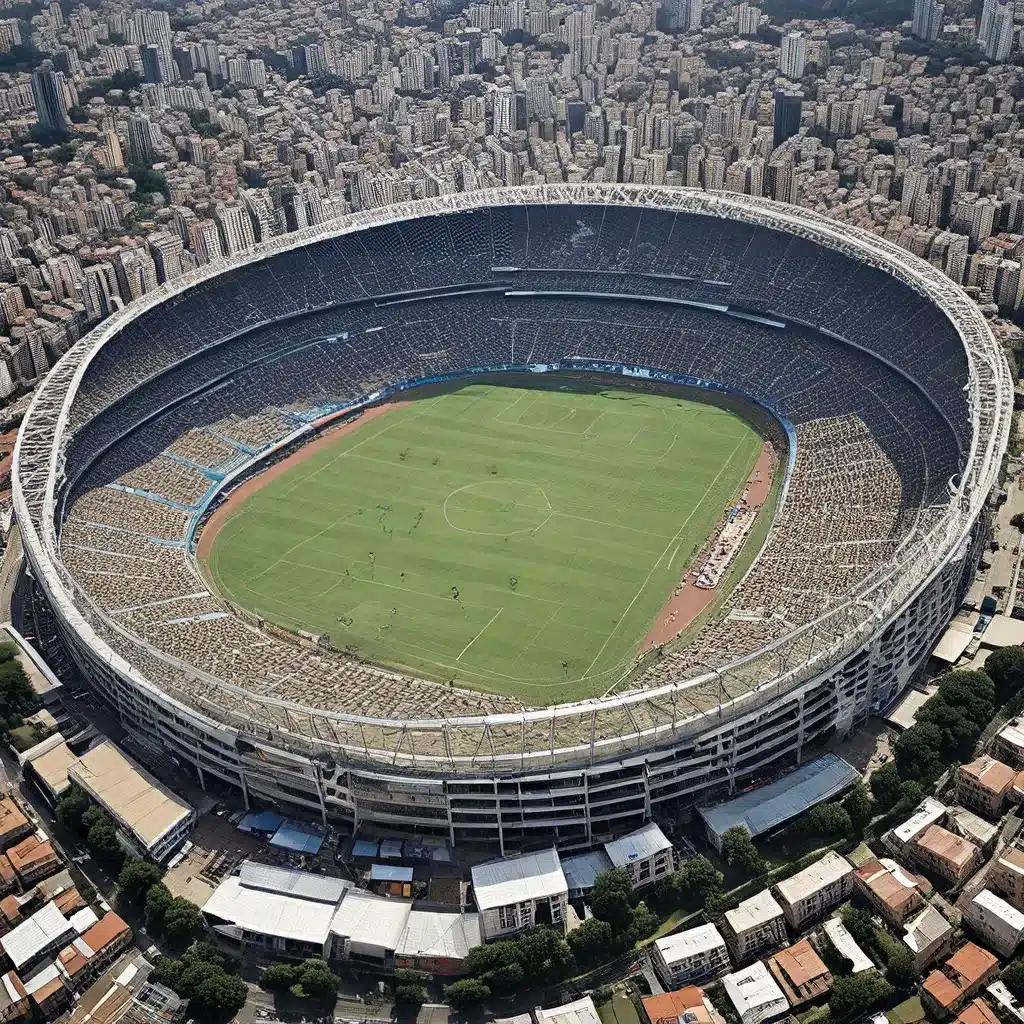
The Iconic Status of Maracanã
The Maracanã stadium in Rio de Janeiro, Brazil, is undoubtedly one of the most iconic and celebrated football grounds in the world. This colossal arena has been the backdrop for some of the most memorable moments in the history of the sport, cementing its status as the beating heart of Brazilian football. Inaugurated in 1950 to host the FIFA World Cup, the Maracanã has since become a symbol of Brazil’s national pride and the passion of its football-loving citizens.
Over the decades, the Maracanã has witnessed the heroics of legendary players such as Pelé, Garrincha, and Zico, who have etched their names in the annals of the game while gracing its hallowed turf. The stadium’s history is inextricably linked to the triumphs and heartbreaks of the Brazilian national team, making it a revered temple of the country’s footballing culture.
As the EventMundi website states, the Maracanã “is considered one of the greatest cultural heritage sites of Brazil and represents much more than just football matches, as it hosts corporate events, music shows, and other events.” Its significance transcends the boundaries of the sport, serving as a reflection of the Brazilian people’s unwavering love for the beautiful game.
The Birth of Maracanã and the 1950 World Cup Heartbreak
The Maracanã’s origins can be traced back to the early 1940s, when Brazil was selected to host the 1950 FIFA World Cup. The country needed a suitable venue to accommodate the anticipated crowds, and the decision was made to construct a grand stadium in Rio de Janeiro, the nation’s capital at the time.
As the New York Times article recounts, the Maracanã was built with the expectation that it would be the stage where Brazil would lift the World Cup trophy for the first time. However, the 1950 World Cup final between Brazil and Uruguay would deliver a devastating blow to the nation’s collective psyche.
On that fateful day, the Maracanã was packed to the rafters with over 200,000 mostly Brazilian fans, all eagerly awaiting the coronation of their beloved Seleção. But the script took an unexpected turn when tiny Uruguay emerged victorious, winning 2-1 in one of the biggest upsets in World Cup history. The stunned silence that followed the final whistle was deafening, and a new word was born to describe the heartbreak: “maracanazo.”
The Maracanã’s Legacy and its Evolving Identity
Despite the heartbreaking debut, the Maracanã has cemented its status as the most beloved and iconic football stadium in Brazil. As the CBC article notes, the stadium has become the “beating heart and soul of futebol” in the country, with no serious player’s career being complete without gracing its hallowed turf.
The Maracanã’s significance transcends the boundaries of the game, as it has also served as a platform for cultural and social events. From music concerts to corporate gatherings, the stadium has become a multifunctional venue that reflects the vibrant and diverse nature of Brazilian culture.
However, the stadium’s evolution has not been without controversy. In the lead-up to the 2014 World Cup and 2016 Summer Olympics, the Maracanã underwent a major renovation, which drew criticism from many Brazilians. The CBC article highlights the concern that the modernization of the Maracanã was being used as an excuse to displace the very people it was originally designed to serve – the soccer-mad poor living in the surrounding neighborhoods.
The Enduring Spirit of the Maracanã
Despite the changes and controversies, the spirit of the Maracanã remains undimmed. The stadium continues to be a symbol of Brazilian identity and the nation’s unwavering passion for football. As the EventMundi website aptly states, the Maracanã is “the heart of the Brazilian football culture” and “the reflection of the vibrant history of football in this country.”
The roar of the crowd, the vibrant colors of the fans’ jerseys, and the emotional connection between the players and the spectators all contribute to the unique atmosphere that permeates the Maracanã during a match. This electric energy is what makes the stadium a truly remarkable and unforgettable experience for any football enthusiast.
While the physical landscape of the Maracanã may have changed over the years, its legacy as the beating heart of Brazilian football remains undiminished. It continues to be a revered institution, a temple of the sport, and a reflection of the nation’s unwavering love for the beautiful game. Visiting the Maracanã is a must-do for any ardent football fan looking to immerse themselves in the rich tapestry of Brazilian football culture.
Conclusion: The Enduring Significance of the Maracanã
The Maracanã stadium in Rio de Janeiro is not just a football ground – it is a living, breathing embodiment of Brazil’s national identity and its deep-rooted passion for the beautiful game. From the heroic feats of legends like Pelé and Garrincha to the heartbreaking moments that have etched their way into the country’s collective memory, the Maracanã has witnessed it all.
As Brazil continues to evolve and modernize, the Maracanã remains a steadfast symbol of the nation’s enduring love for football. While the stadium may have undergone physical changes, its essence and significance as the beating heart of Brazilian football culture remain undiminished.
For any football enthusiast looking to experience the true spirit of the sport, a visit to the Maracanã is a must. It is a place where the passion, the history, and the sheer joy of the game come together to create an unforgettable and truly immersive experience. As you step onto the hallowed turf, you can’t help but feel a deep connection to the rich tapestry of Brazilian football, a connection that transcends time and space.
In the end, the Maracanã is not just a stadium – it is a testament to the enduring power of the beautiful game and the unbreakable bond between a nation and its beloved sport. It is a place where the soul of Brazilian football resides, and where the dreams of generations of fans continue to be realized and celebrated.

